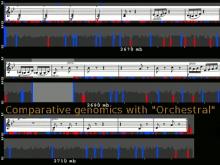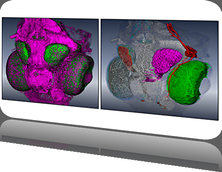Leveraging Wall-sized High-Resolution Displays for Comparative Genomics Analyses of Copy Number Variation

The scale of comparative genomics data frequently overwhelms current data visualization methods on conventional (desktop) displays. This paper describes two types of solution that take advantage of wall-sized high-resolution displays (WHirDs), which have orders of magnitude more display real estate (i.e., pixels) than desktop displays. The first allows users to view detailed graphics of copy number variation (CNV) that were output by existing software. A WHirD's resolution allowed a 10x increase in the granularity of bioinformatics output that was feasible for users to visually analyze, and this revealed a pattern that had previously been smoothed out from the underlying data. The second involved interactive visualization software that was innovative because it uses a music score metaphor to lay out CNV data, overcomes a perceptual distortion caused by amplification/deletion thresholds, uses filtering to reduce graphical data overload, and is the first comparative genomics visualization software that is designed to leverage a WHirD's real estate. In a field evaluation, a clinical user discovered a fundamental error in the way their data had been processed, and established confidence in the software by using it to find known genetic patterns in hepatitis C-driven hepatocellular cancer.

